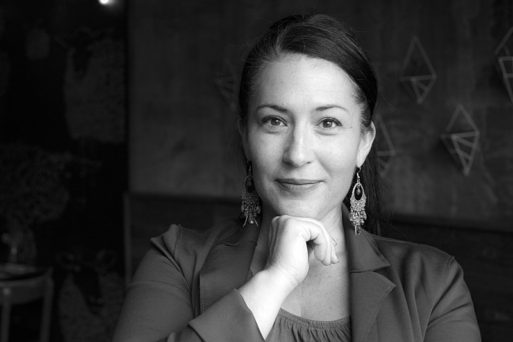
-
- In “Relentless,” poet laureate Ada Limón locates the speaker’s mother in a vineyard
- Credit: Dan Meyers via Unsplash
Sun in the cool expressway underpass air
and Ma calls, says it’s nice out today
during her long walk through the vineyard
where spring’s pushed out every tizzy-tongued
flower known to the valley’s bosom of light.
I say, Look, we’re talking about the weather,
and she says, You know, it does help you
see the person you’re talking to. (The difference
in a wind-blown winter’s walk in January cold
and the loose steps of sun on far-off shoulders.)
Then I say, Now, we’re talking about talking
about the weather. It’s very meta of us.
Yes, she says, we could go on like this forever.
Ada Limón sets the stage of “Relentless” by contrasting two different people in two different locations: There is the author in an urban underpass, and there is her mother in a rural vineyard.
Mentioning “we’re talking about the weather” twice is intriguing; the author notes it to the mother, and she’s also noting it to the reader. The purpose seems to be heightening an awareness, as if preparing the reader for what’s to come next.
And it’s been exactly two months since
C died, my hands holding her head, odd
extraordinary February sun gone down
on the smooth slope of green grass, and
all my father and I had done all day was
talk about two things: the weather and her
breathing. (That machine-body gone harsh
in its prolonging and the loud gasping sigh of dying,
thick as a hawk’s cry, breaking out in the cloudless
atmosphere.) Some impossibly still moment,
we stood looking at the long field’s pull
and we wanted her to die, for her sake,
wanted the motor of body to give up and go.
In referring to “C [who] died,” we don’t know who C is, but introducing the presence of her father, and the industrial imagery that echoes what came before indicates that it could very well be the speaker’s mother. The “machine-body gone harsh” paints the picture of C being on a life support machine that could not keep its patient alive.
More modern imagery is introduced, such as “the motor of body”; this imagery and the naturalistic “hawk’s cry/breaking out in the cloudless/atmosphere” harkens back to the dualistic imagery in the first part of the poem.

Poet Laureate Ada Limón
Credit: Christopher Michel via Wikimedia Commons
If the mother is C, then the imagery of “extraordinary February sun gone down/on the smooth slope of green grass, and/all my father and I had done all day was/talk about two things: the weather and her/breathing” indicates that the conversation in January was most likely one of the last ones the author had with her mother.
How strange this silent longing for death,
as if you could make the sun not come up,
the world’s wheeling and wheeling its seasons
like a cruel continuation of stubborn force.
But that’s not how it happens. Instead, light
escapes from the heart’s room and for a moment
you believe the clock will stop itself. Absence.
You see: light escapes from a body at night
and in the morning, despite the oppressive vacancy
of her leaving’s shadow, light comes up
over the mountains and it is and it is and it is.
“How strange this silent longing for death” expresses the contradiction that many bereaved people feel in wanting their loved ones to be free of pain and suffering but feeling conflicted at the sentiment.
Here, the natural and industrial collide again with “the world’s wheeling and wheeling its seasons/like a cruel continuation of stubborn force.” Instead of being at odds with each other, these two qualities come together in a relentless, cruel and unstoppable way.
However, the speaker adds that the reality of death isn’t as grand as the sun not coming up, but that instead “light/escapes from the heart’s room” as though it’s a smaller, quieter, and more personal event.
She reiterates authoritatively, “You see: light escapes from a body at night” and “despite the oppressive vacancy/of her leaving’s shadow, light comes up/over the mountains and it is and it is and it is.”
When a soul leaves its body, the event begins as something small, but then it rises and reigns triumphantly over the mountains. A resurrection-like quality ends the poem as though all of the “stubborn force” of life is thankfully over. Repeating “and it is” three times makes it seem almost godlike in the Christian sense, and it finishes the theme that began with the image in the vineyard.
Ending the poem this way gives the reader an eternal feeling, as if the complicated relationship between death and life was, is, and will always be the same: relentless.

 “Relentless” by Ada Limón
“Relentless” by Ada Limón


 Recovering Cremation Remains After the Los Angeles Fires
Recovering Cremation Remains After the Los Angeles Fires
 “As Tears Go By” by Marianne Faithfull
“As Tears Go By” by Marianne Faithfull
 “The Sea” by John Banville
“The Sea” by John Banville














